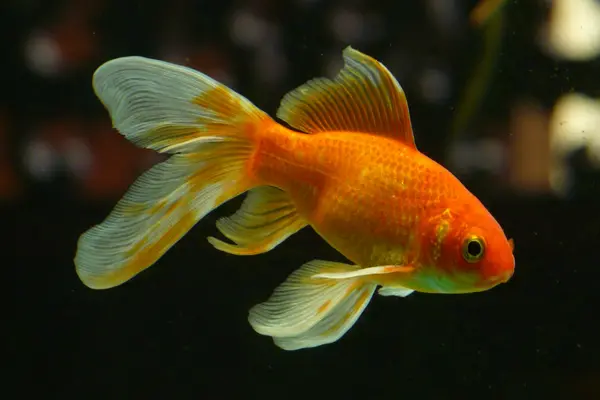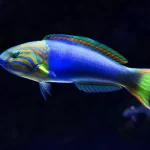If you haven’t heard about what swim bladder disorder is, this is a condition where the swim bladder fails to function properly due to several factors.
Now, what is a swim bladder? If you keep fish as pets, you need to be aware of the organs. A swim bladder is nothing but a gas-filled internal organ that helps a fish maintain its buoyancy.

The swim bladder disease is a disorder that means a combination of problems that may affect the swim bladder and not just a single issue.
This type of disease is most commonly found to occur in bettas and goldfishes and this disorder can affect the fish species virtually. This type of disorder is usually treatable and the fish can recover totally.
Swim Bladder Disease – What is it actually?
Swim Bladder disorder is a condition where the swim bladder of a fish fails to function properly due to a combination of several reasons. The different reasons may be physical abnormalities, environmental or mechanical factors, and other and other undiagnosed reasons. A fish that is affected by swim bladder disease will find it difficult to float or sink which means it will display problems with buoyancy.
Swim bladder disease in aquarium fishes- What are the symptoms like?
There are times when an aquarium owner might not understand the abnormality of the way in which a fish floats. whenever a fish is not able to float in the tank properly, it looks like it is dead. However, the reality is that the fish might be exhibiting symptoms of this disorder called swim bladder disease. Fishes that suffer from swim bladder disease demonstrate several symptoms among which the primary one is the inability to float. Let’s check out a few more symptoms of swim bladder disease.
- Trying to keep the body afloat but sinking to the bottom portion of the tank
- Floating towards the top of the tank keeping the head above water
- Distended belly
- Struggling to maintain an upright position, turning upside down or on its side
- Loss of appetite
- Curved back
Here is a detailed description of the few symptoms given above:
Floating to the top of the tank
When the swim bladder of the fish is deflated or not in its working condition, it will make the fish sink to the bottom of the tank. While eating, if the fish has taken in too much air, this helps it float to the top portion of the fish tank.
Distended belly
When the swim bladder of a fish compresses, the fish might find it difficult to swim with the help of a distended stomach. Swim bladder disease order also has an adverse impact on the digestive process of the fish. Hence the belly of the fish can get enlarged more than its normal size.
Finding it tough to stay upright
A normal fish that is not suffering from swim bladder disorder will never find it tough to float itself and remain static through its upright position in the water. How can you understand whether your fish is finding it tough to remain in an upright position? You will find the fish to be moving its fin excessively and striving to float in the right position.
Loss of appetite
The fish that has been affected by swim bladder disorder may have a very low appetite or no appetite at all. In a situation where the fish is not able to float properly, it may also not be able to feed itself or reached the proper surface of the water to find food.
Curved back
When the abdomen of the fish gets inflated due to the swim bladder disease, The Other organs are pushed aside which gives it a curvy back. This curvy back makes it even more difficult for them to swim inside the water.
Swim bladder disorder – What are the different causes?
The swim bladder disorder may be caused due to various issues like feeding problems, environmental factors, mechanical factors, and several other reasons. Here is a look into the typical causes of swim bladder disorder in fishes.
- As soon as you give in floating foods, you may find the affected fish eating rapidly, overeating, or gulping in too much air which instantly leads to an extended belly. unaffected fish can also suffer from constipation due to swim bladder disease. Fishes may at times eat dry flake foods that expand after they absorb water and this can also lead to a heavy stomach or enlarged intestinal tract.
- In case the temperature of the fish tank is a bit too low, this can also slow down the digestive process, which in turn leads to enlargement of the gastrointestinal tract. This enlargement puts unnecessary pressure on the swim bladder of the fish.
- The various abdominal organs of a fish can at times get enlarged than the normal size and affect the swim bladder. Fat deposits in the liver, within the kidneys, or the binding of eggs in a female fish, can also enlarge the swim bladder and lead to such a disorder.
- Rarely, if the fish gets a hard blow through a sharp object placed inside the fish tank, this can also damage the swim bladder.
- Eating parasites for feeding on bacteria can also enlarge the swim bladder and cause swim bladder disorder.
- Fishes may also be born with such birth defects that can have a negative impact on their swim bladder but these cases are extremely rare.
Is it possible to diagnose swim bladder disease in aquarium fishes?
Generally, it is seen that swim bladder disorders are diagnosed at home by watchfully observing the above-listed symptoms in fish. But once you are sure that your pet fish is suffering from swim bladder disease, you should take it to the veterinarian who specializes in all sorts of aquatic conditions.
The only ideal way of properly diagnosing the swim bladder is through an X-ray. The X-ray will reveal the actual size of the swim bladder, its location inside the body of the fish, and its shape. In case there is fluid present inside the bladder or some other kind of abnormalities, that will also be found through the x-ray. It can also show whether or not there is an abnormal growth of some other disease that may push the bladder in the near future.
How can you treat swim bladder diseases among fish?
As long as the treatment of swim bladder disease among fishes is concerned, you have to maintain the water, make alterations in feeding processes, and give necessary antibiotics to the affected fish. Here are a few other ways of treating this disorder.
- Allow the fish to fast: Since the fish is already suffering from an enlarged intestine or stomach that is the main cause of swim bladder disorder, the foremost thing that you can do is not give any food to the fish for at least 3 days.
- Feed peas to the fish: After you let the fish fast for 3 days, on the fourth day you can feed it cooked and skinned peas. You can microwave or boil frozen peas for a few seconds checking their consistency. Make sure the PC is not too solid or not too soft.
- Set the right temperature of the water: Since the fish is fasting for the first three days, you may increase the temperature of the water to 78 to 80 degrees Fahrenheit and let it remain until you start treating the fish for the disorder.
- Give it the necessary antibiotics: When the fish is suffering from an infection that is believed to be the cause of swim bladder disorder, you should treat the disease with an antibiotic only after visiting a veterinarian who prescribes the medicine.
Irrespective of the cause of swim bladder disorder, there are a few other supportive treatments that you may try. They are as follows:
- Make sure the water is extremely clean and the temperature is rightly set
- Add a little bit of aquarium salt inside the fish tank
- Reduce the flow of water inside the fish tank with the help of a strong current
- Reduce the water level so that the fish finds it easier to swim around inside the tank
- In case the fish floats around keeping a part of its body constantly exposed above the water, you may drop in a few drops of stress coat water conditioner to avoid red spots and the development of sores on the body of the fish
Is there a way in which you can prevent swim bladder disease?
When you have a fish tank at home and you love keeping fish as pets, you must be wondering about how to prevent such diseases from occurring. Here are a few ideas you may keep in mind.
- You can’t forget the fact that poor water conditions can make a fish wall available to different types of infections. Hence you need to clean the tank at regular intervals and change the water as well in order to prevent swimbladder disorder.
- Maintain a slightly higher temperature of the water so that it helps in the digestion of food and avoids constipation.
- Feed only high-quality foods to the fish and in the case of dried foods, make sure you soak them before feeding.



![50+ Fish Names In Tamil With Pictures [English Tamil Fish Names] Fish Names In Tamil With Pictures](https://thefishblog.com/wp-content/uploads/2022/08/Fish-Names-in-Tamil-150x150.webp)



